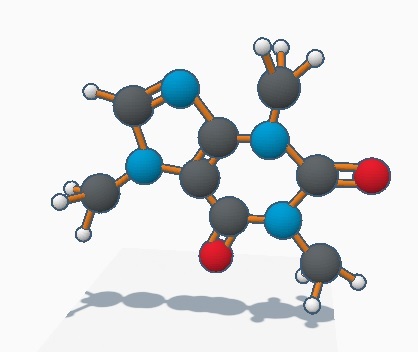
As you might know, a caffeine molecule consists of 8 parts carbon, 10 parts hydrogen, 4 parts nitrogen, and 2 parts oxygen; C8H10N4O2. Now I’ll tell you what my parts of the molecule are supposed to be, the gray spheres are carbon, the white spheres are hydrogen, the blue spheres are nitrogen, the red spheres are oxygen, and the orange cylinders are the bonds connecting the atoms. It has a density of 12.3 g per mL, and a melting point of 235°C (455 °F). Caffeine is a natural stimulant that mainly affects the nervous system, where it increases alertness and provides a needed energy boost when you are exhausted. Its effect peaks within one hour after consumption and your body eliminates half of it after one hour. This is according to Harvard Health. It helps you keep going throughout your day when you use your energy up quickly.
Download File
Download File
Contact us
Thank you for your interest in contacting Future Engineers. We look forward to connecting with you!
General Inquiries
support@futureengineers.orgSponsorship Inquiries
sponsor@futureengineers.org